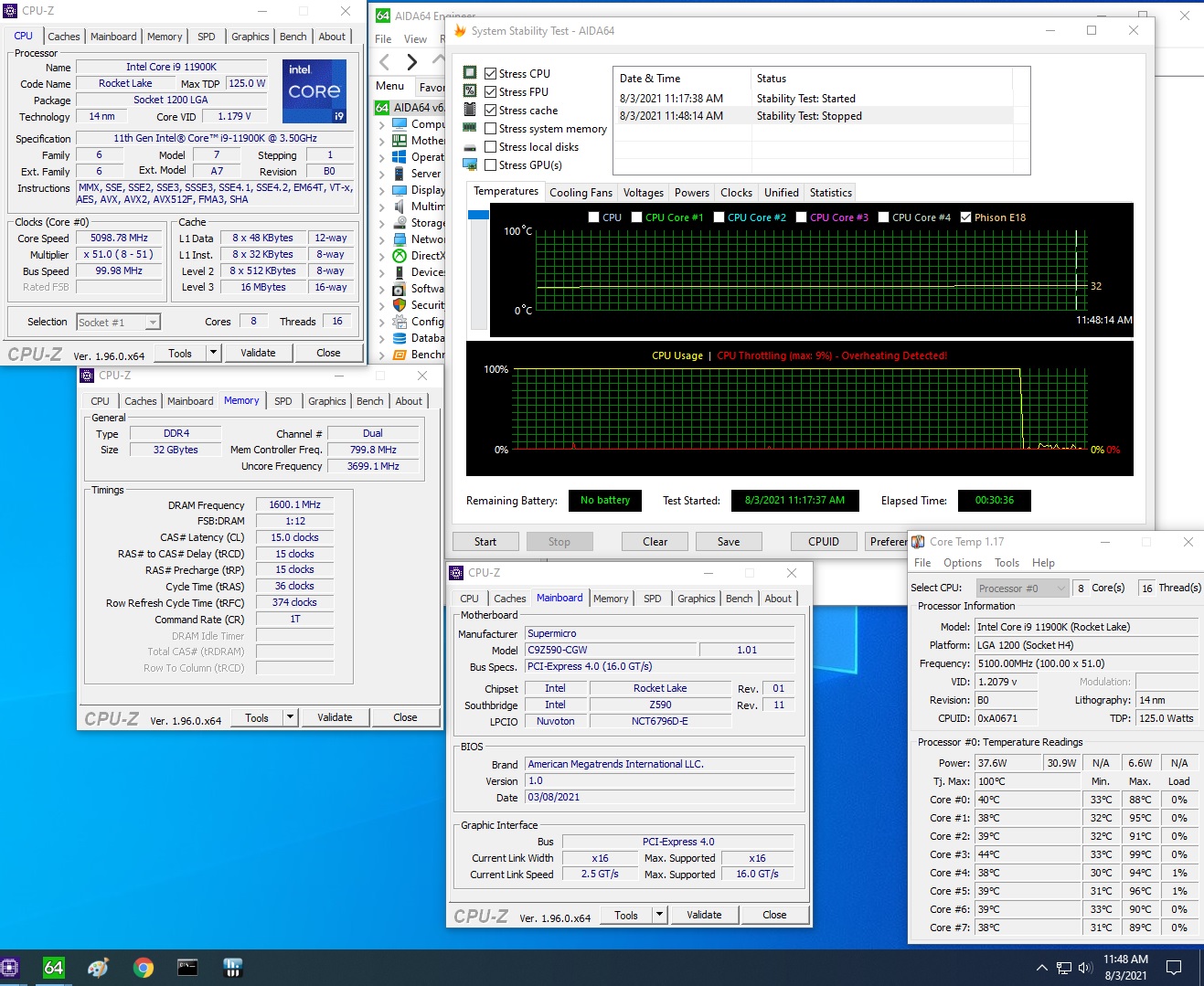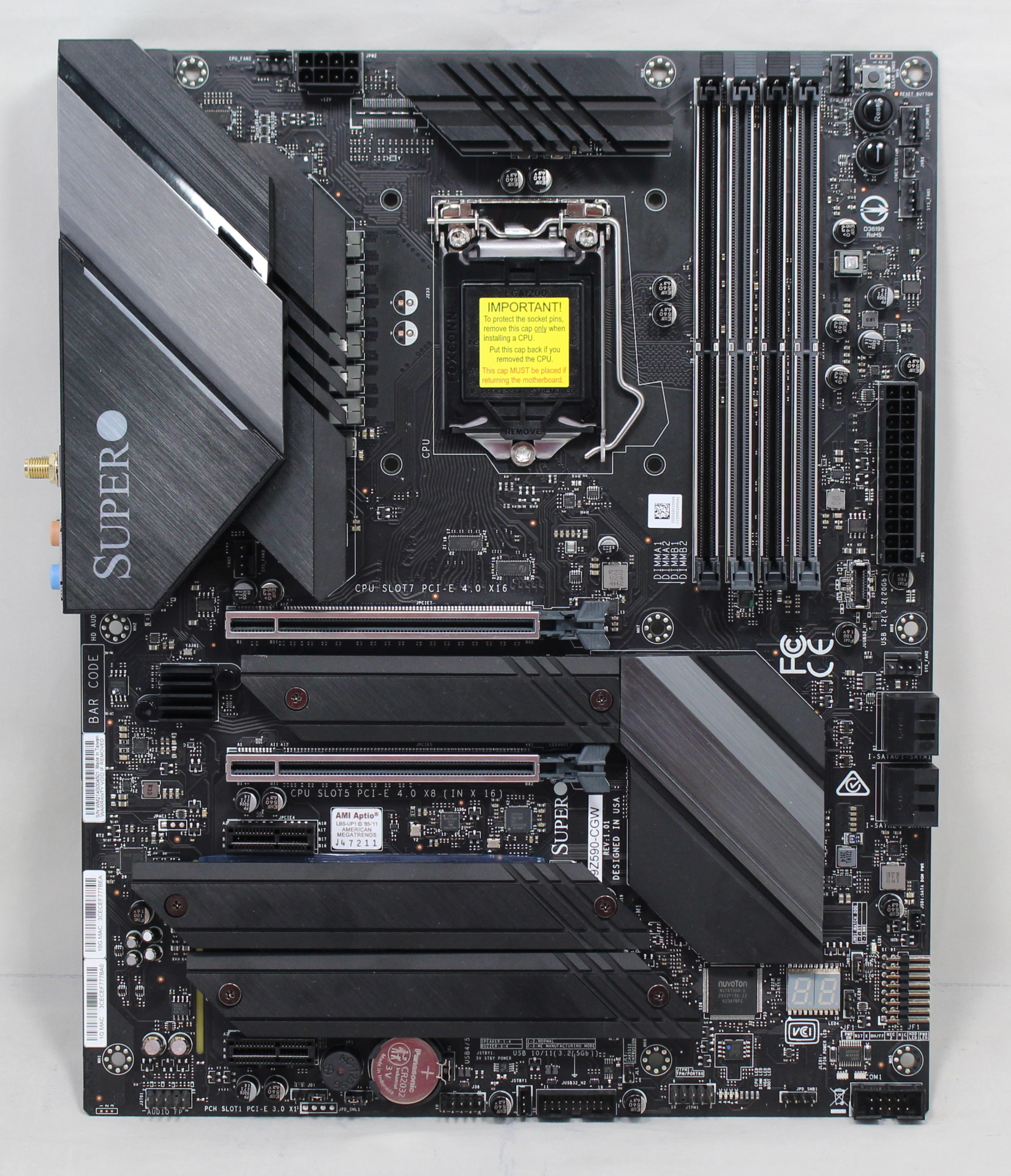Why you can trust Tom's Hardware
Benchmark Results
Our standard benchmarks and power tests are performed using the CPU’s stock frequencies (including stock Thermal Velocity Boost), with all power-saving features enabled. Optimized defaults are set in the BIOS and the memory set using the XMP profiles. For this baseline testing, Windows is set to the balanced power plan.
Synthetic Benchmarks
Synthetics are a great tool to determine if a board runs out of spec, as identical settings should produce similar performance results. Advanced memory timings are the one place where motherboard makers can still optimize for either stability or performance, though, and those settings can impact some testing.
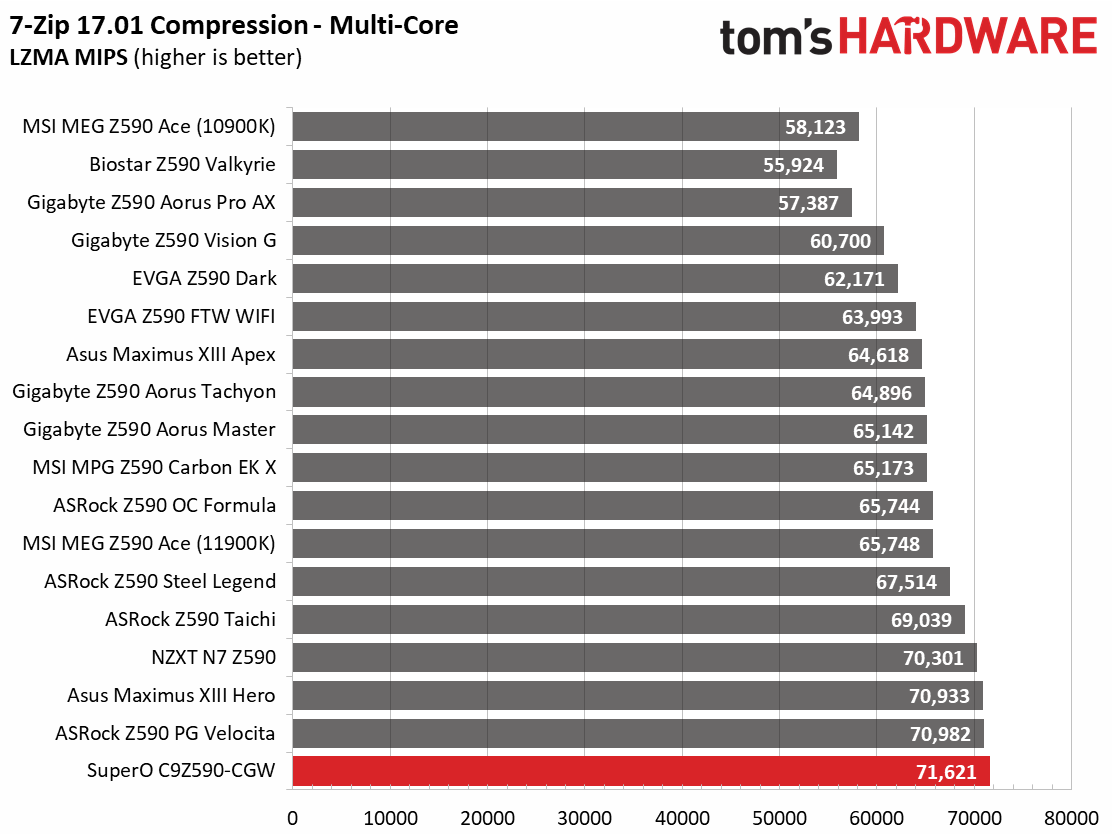
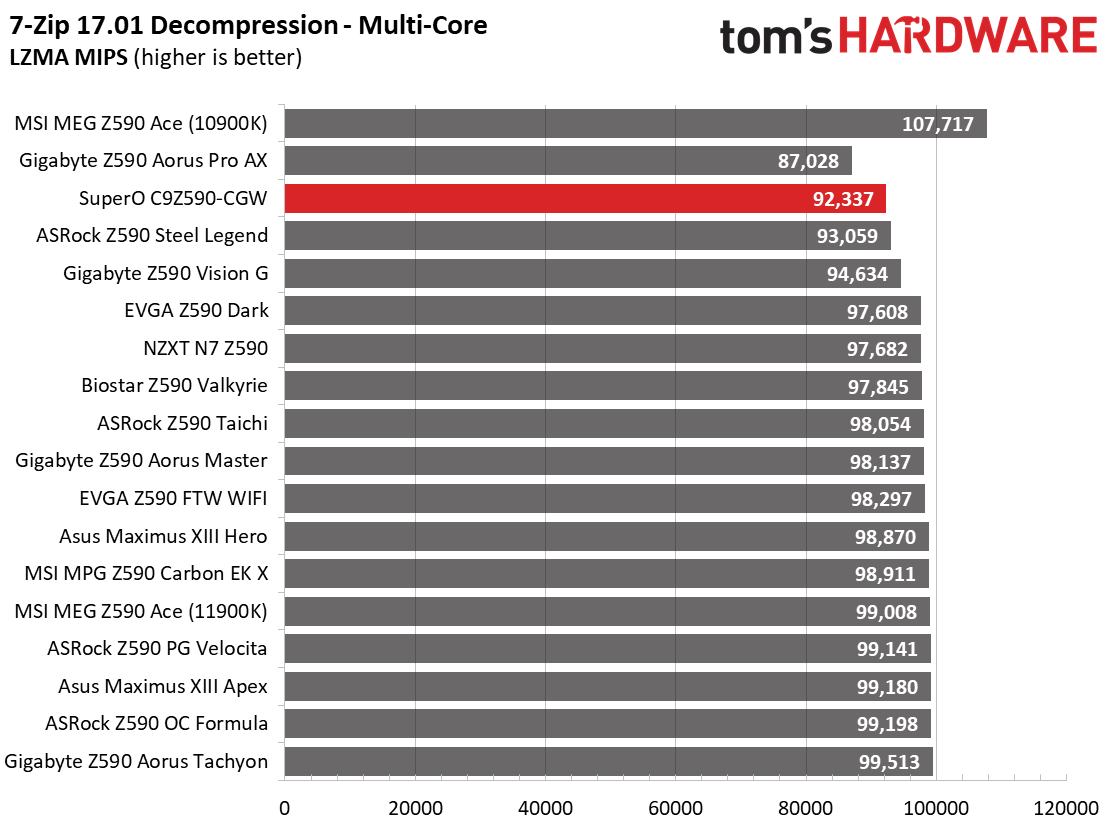

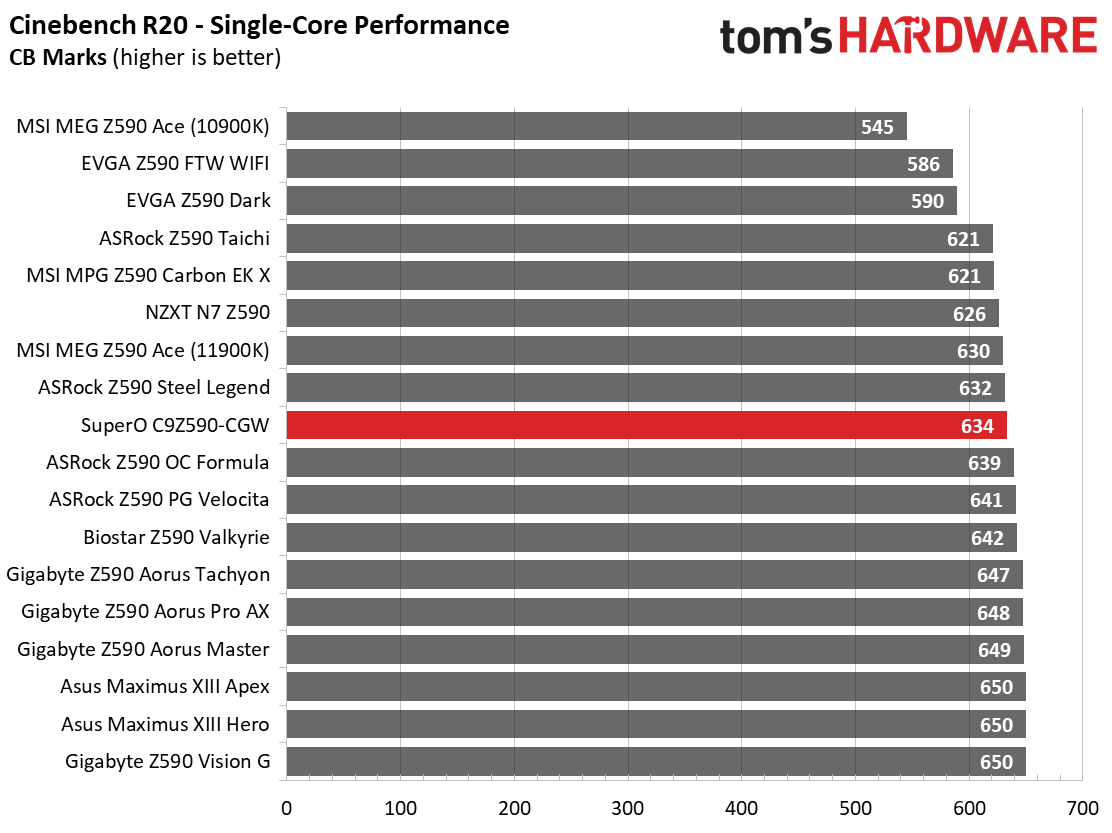
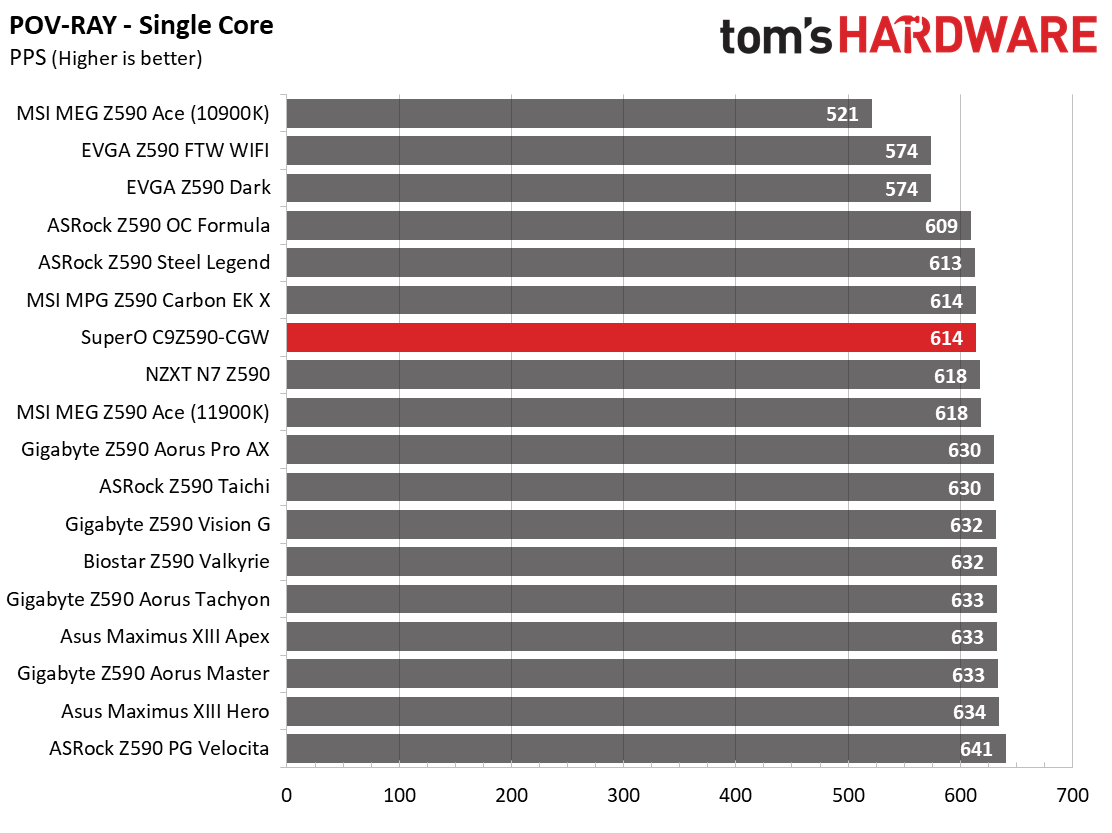
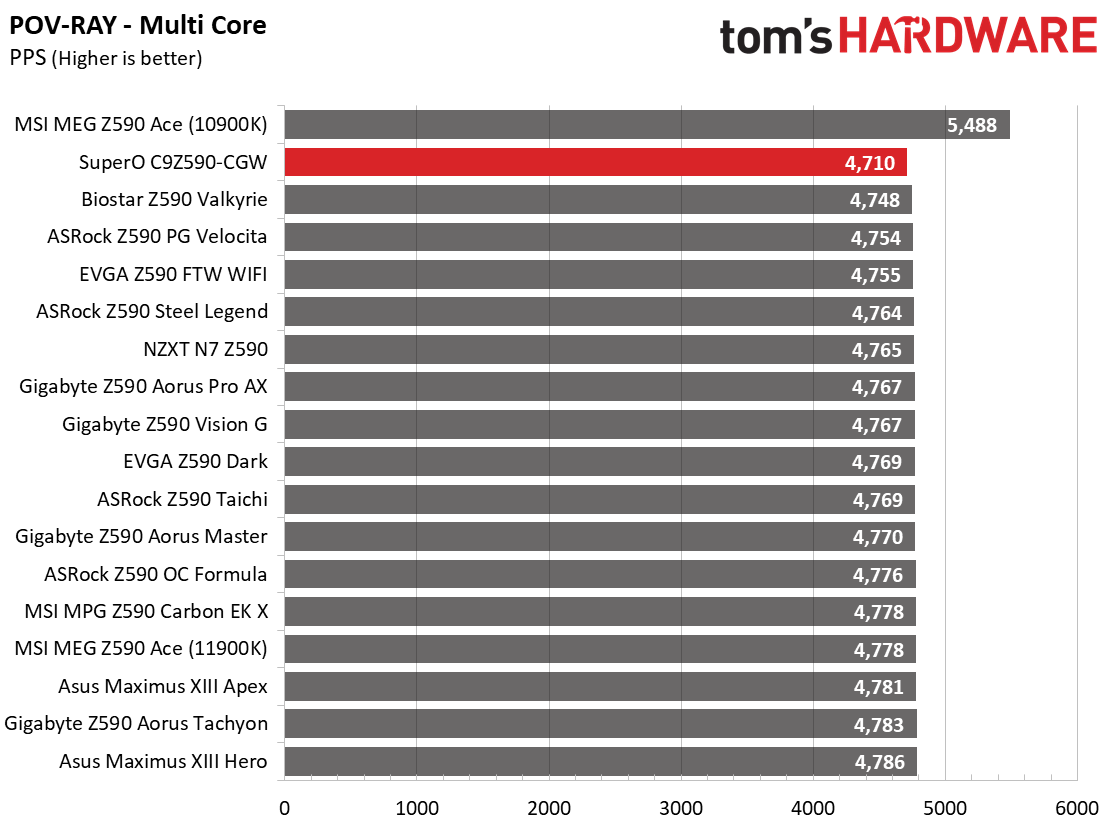
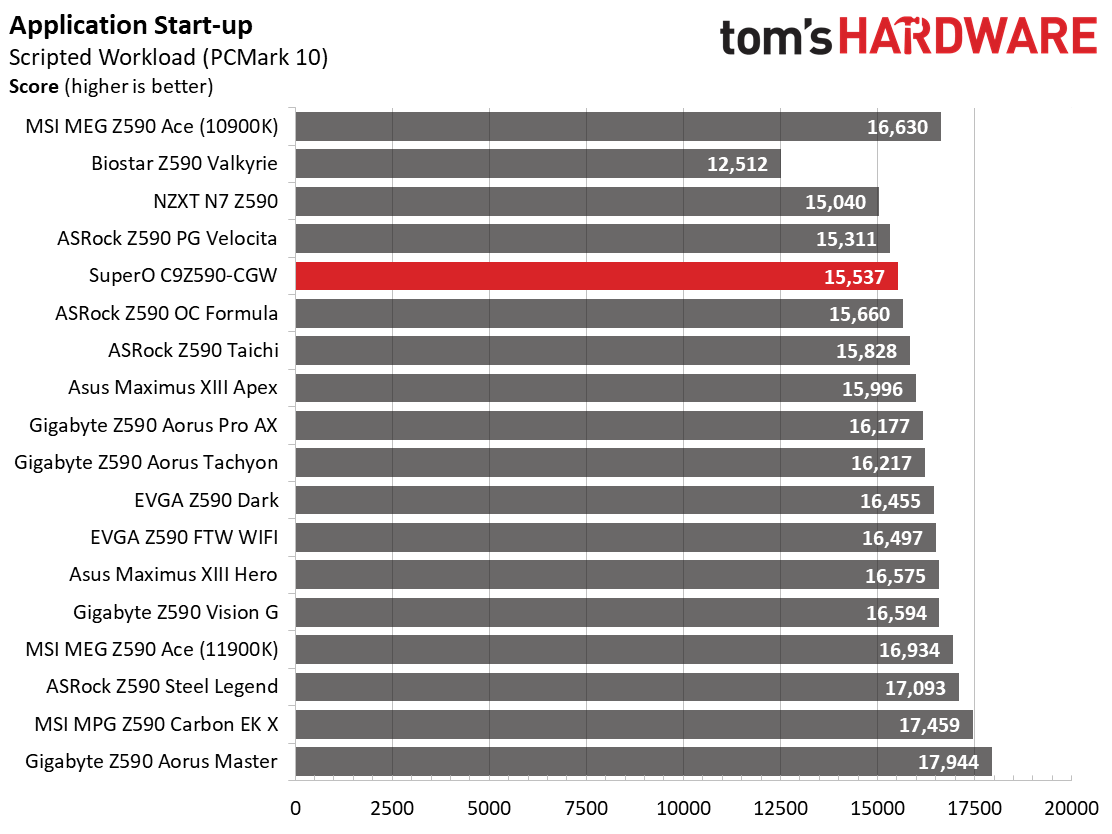

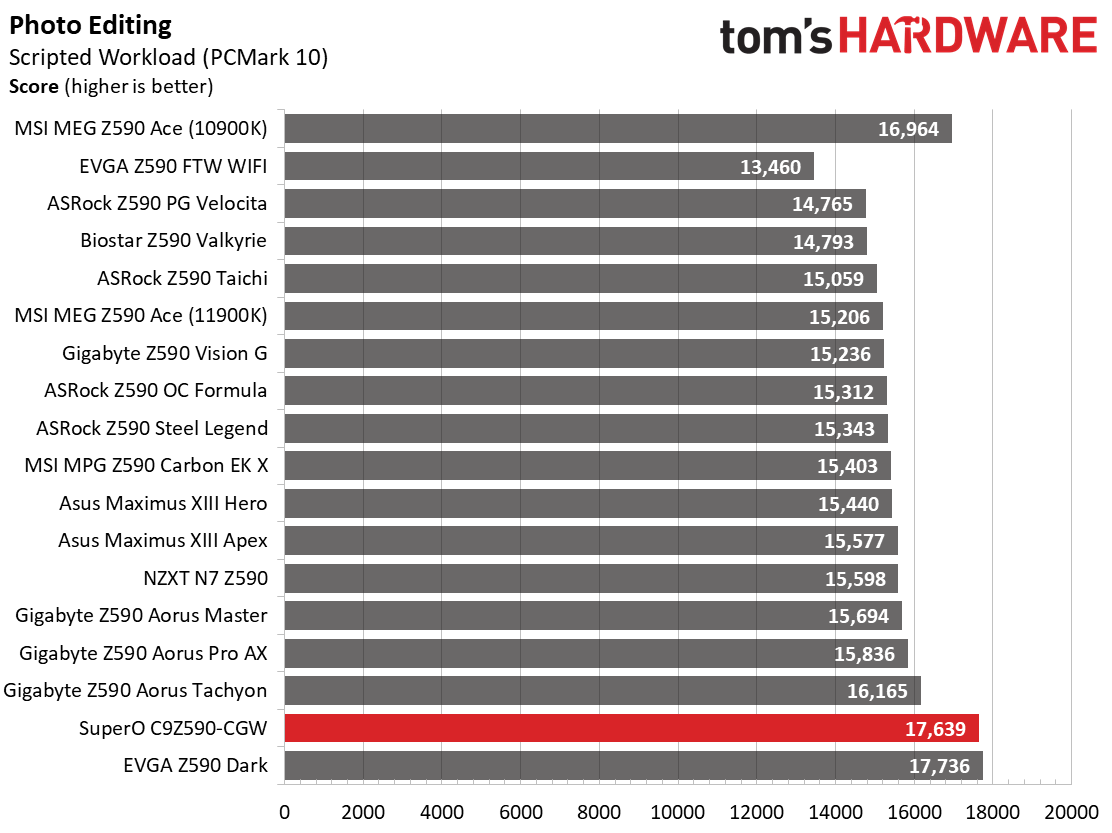
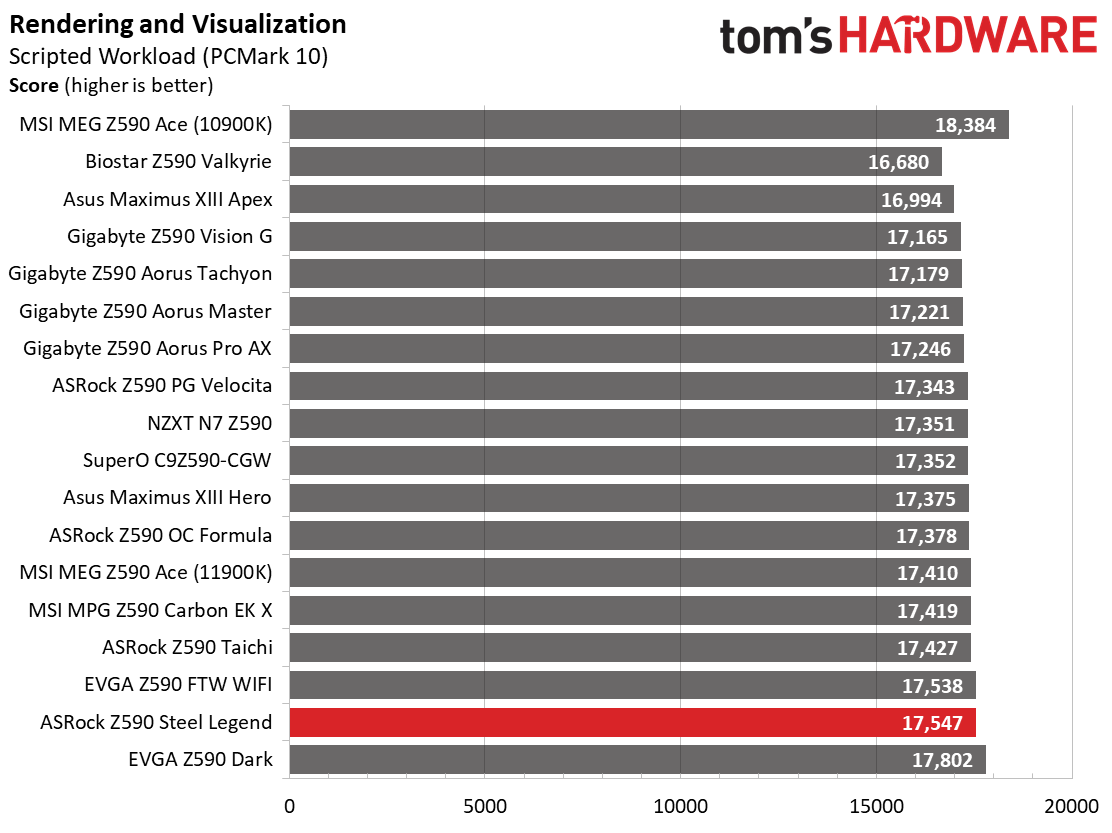

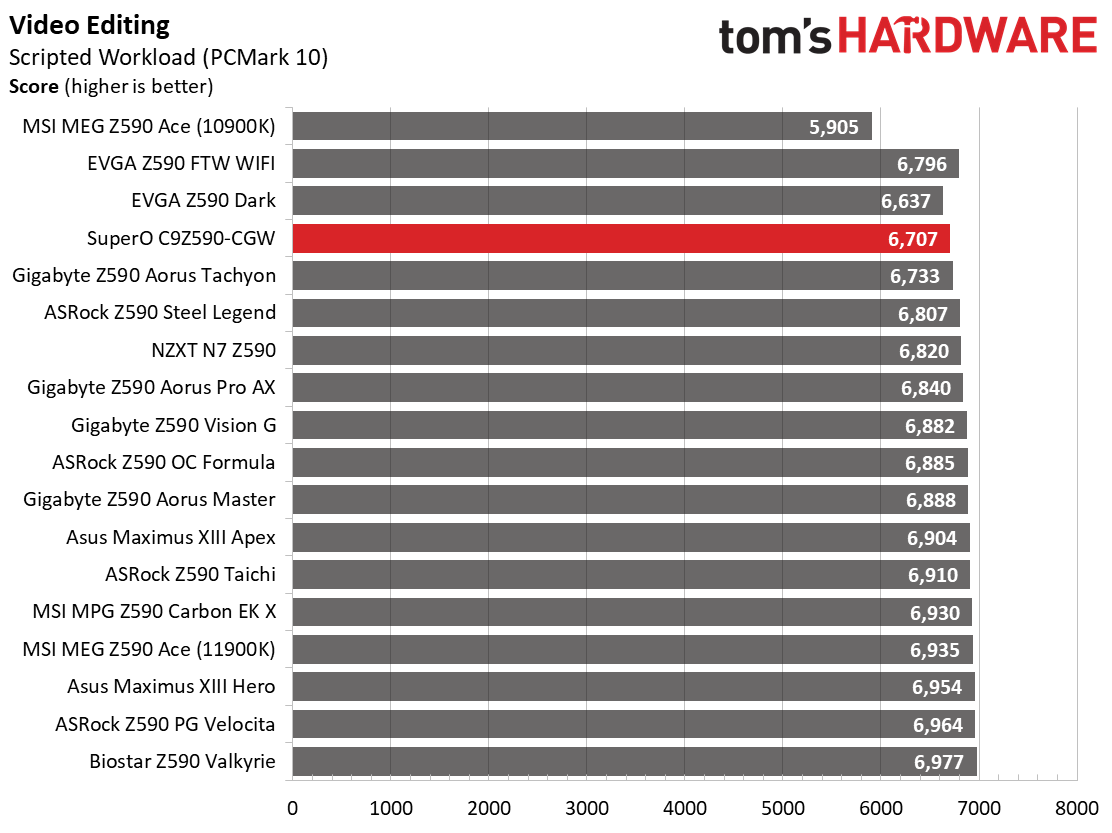
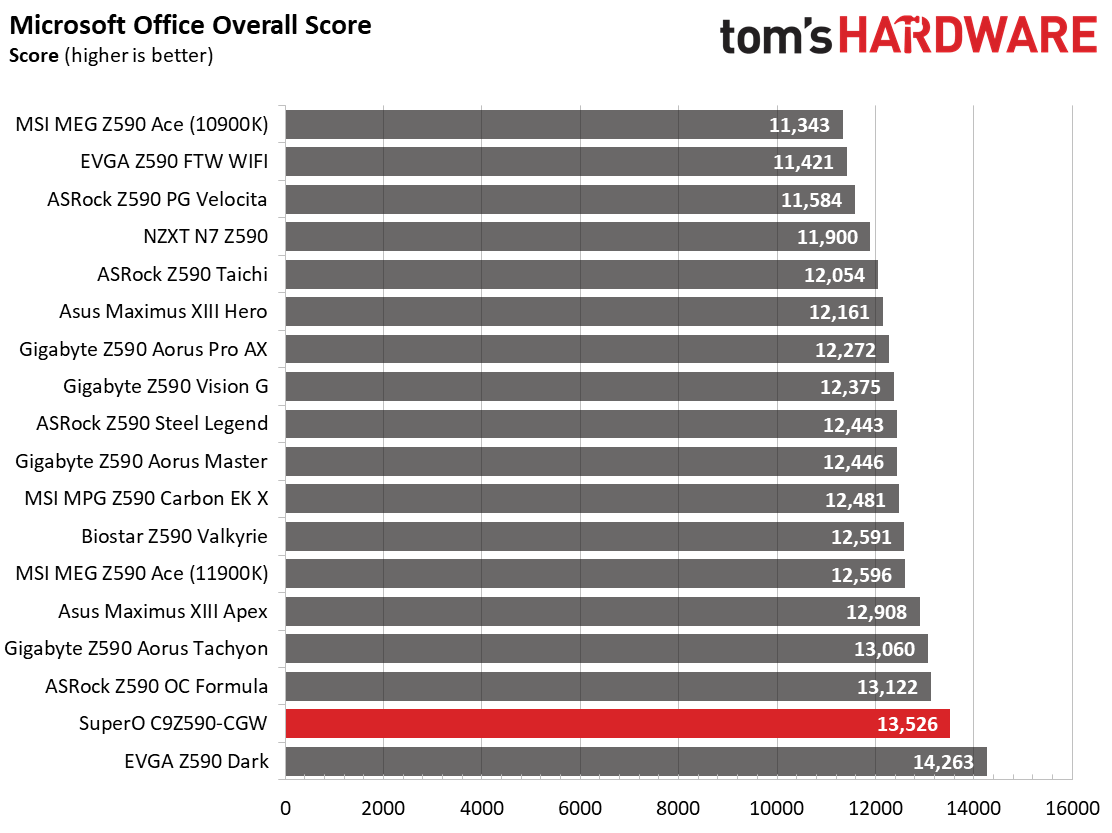
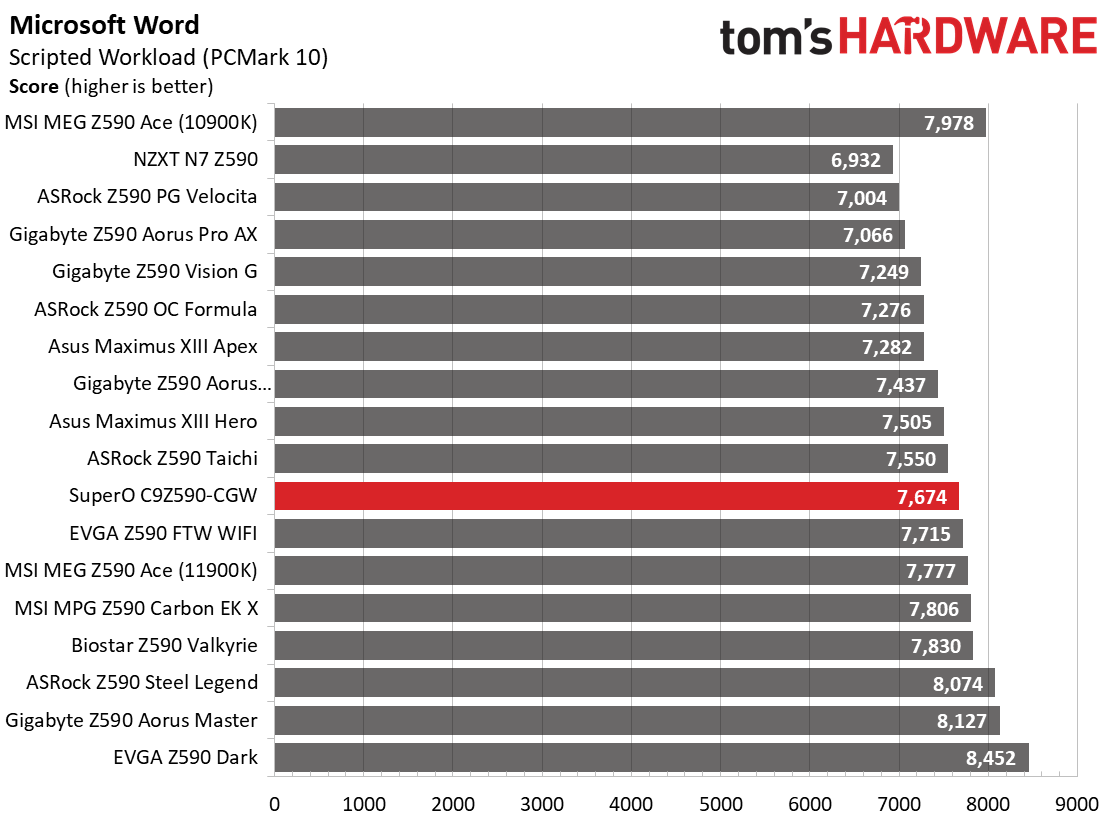

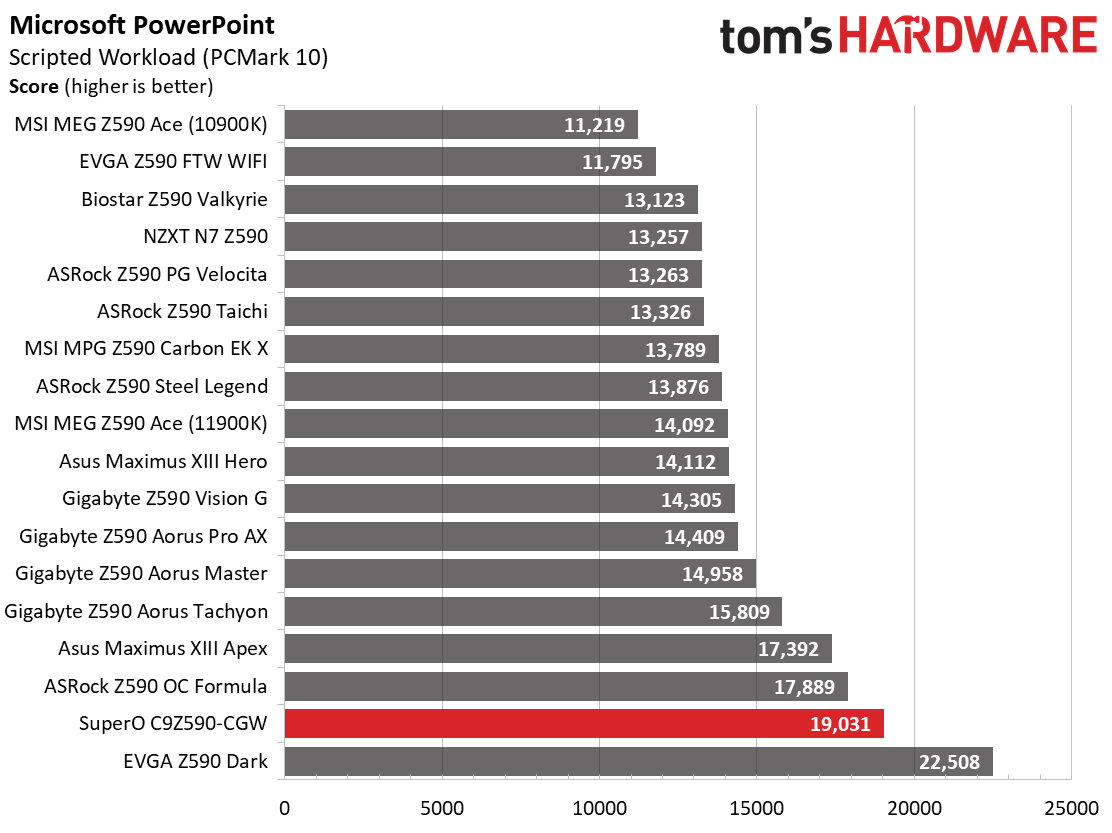

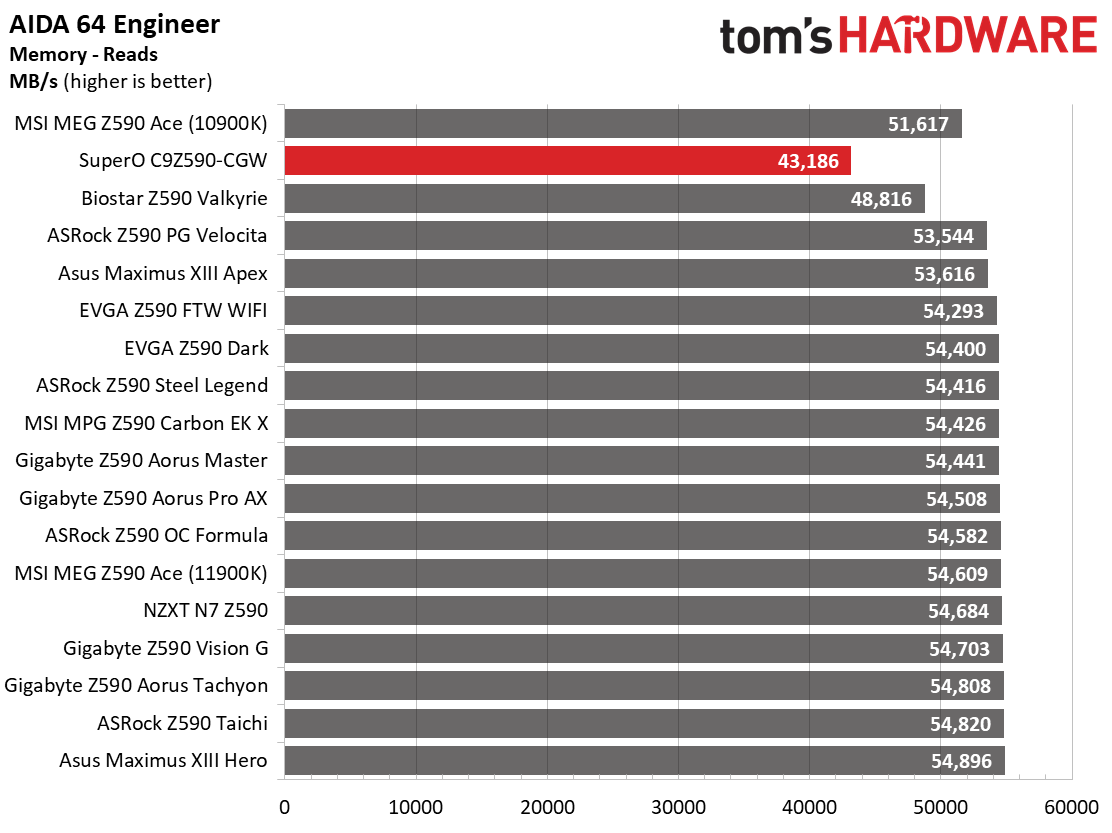
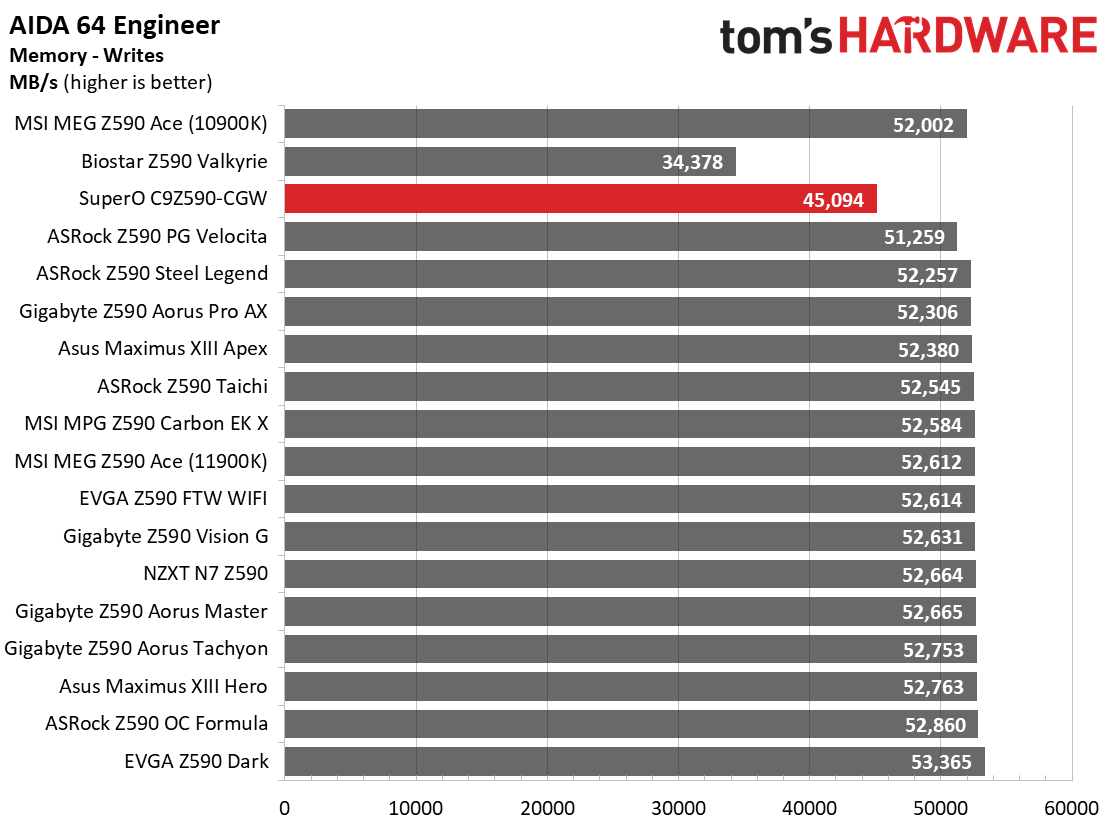
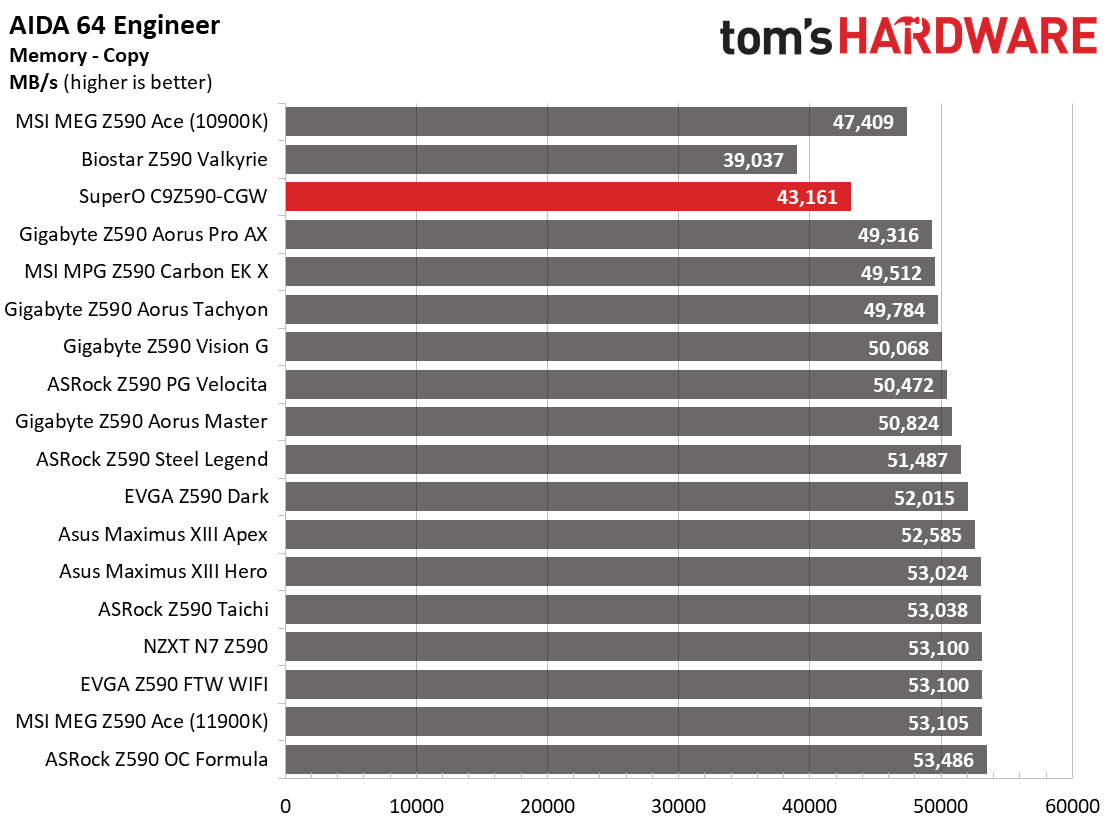

Starting with the synthetics, overall the board performed much like the other boards that closely follow intel specifications. 7Zip compression was the highest result so far, but decompression was one of the slowest. Cinebench was also slower in both single and multi-threaded tests, as was POV-Ray. The PCMark 10 suite was all over the map, showing good and bad results. The AIDA benchmarks were quite low, but that was expected since we ran the sticks at DDR4 3200. Between a combination of slower RAM speeds and following the intel spec, the results averaged out similar to the other boards that follow the intel specification out of the box.
Timed Applications
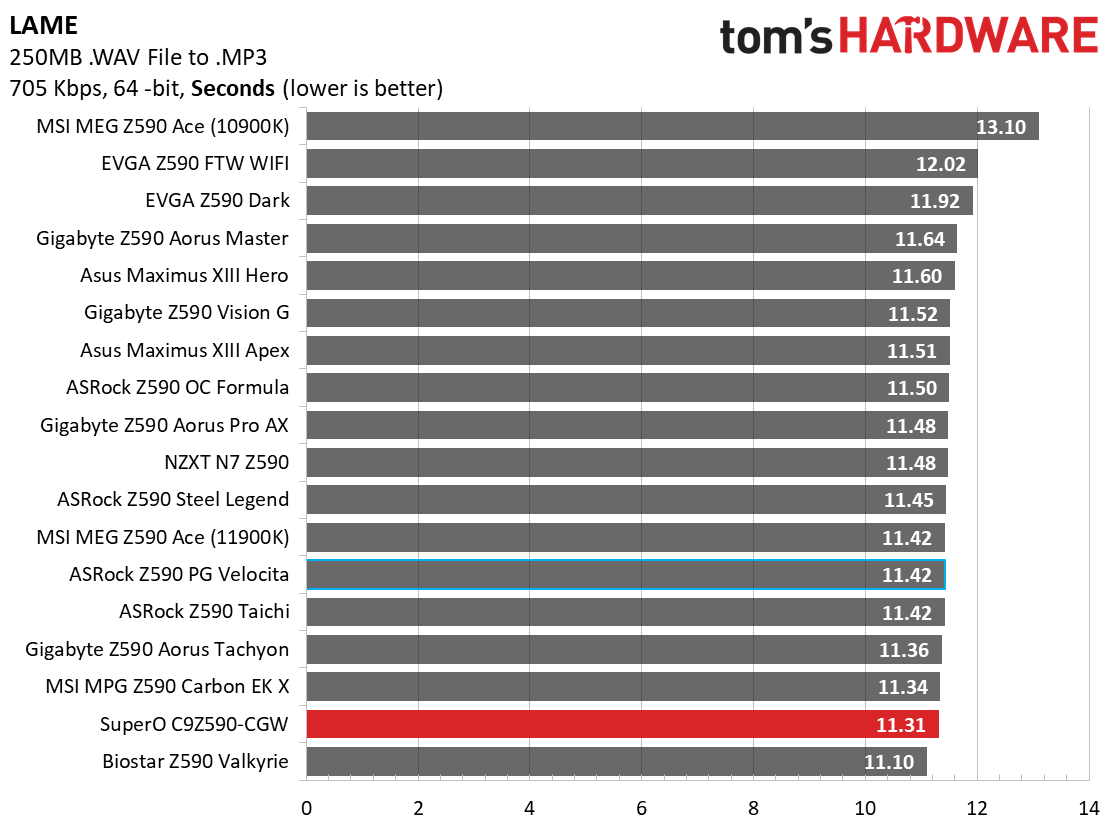
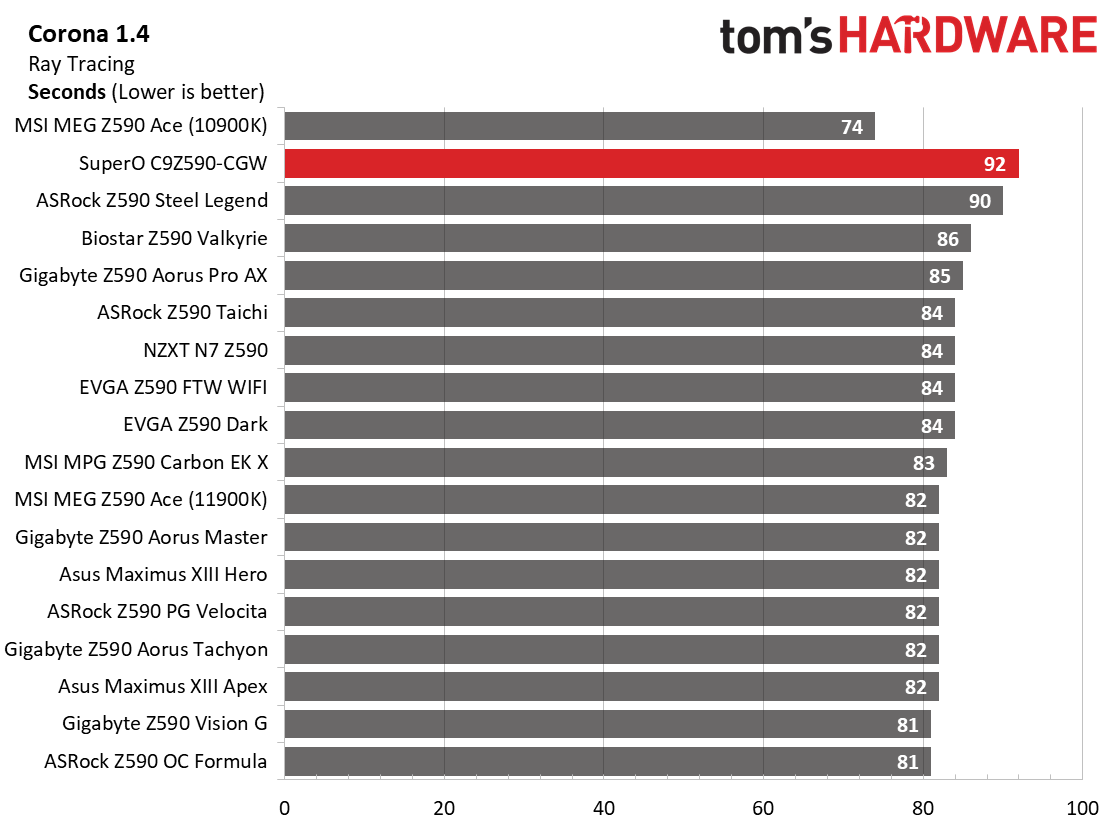

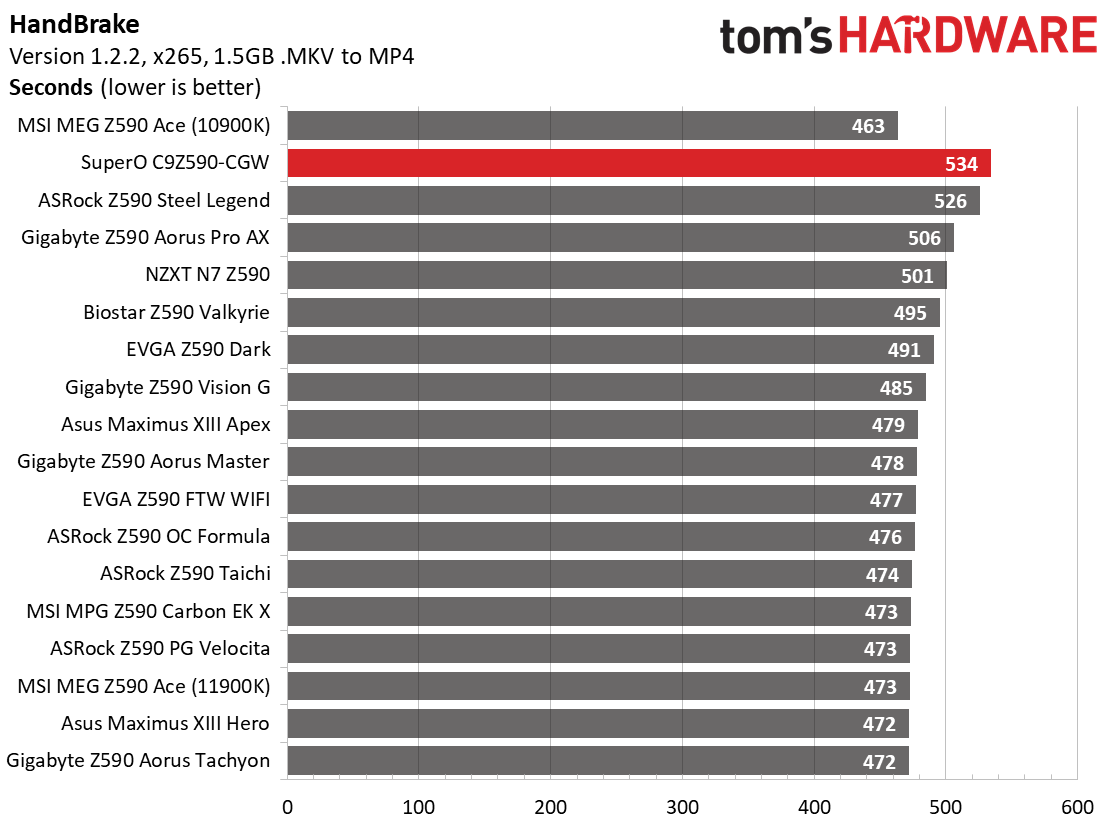
LAME testing showed the SuperO C9Z590-CGW as one of the fastest results at 11.31 seconds. Corona and Handbrake results were the polar opposite, coming posting the slowest results so far. The fact that the board follows Intel’s specifications holds it back out of the box in long-running programs.
3D Games and 3DMark
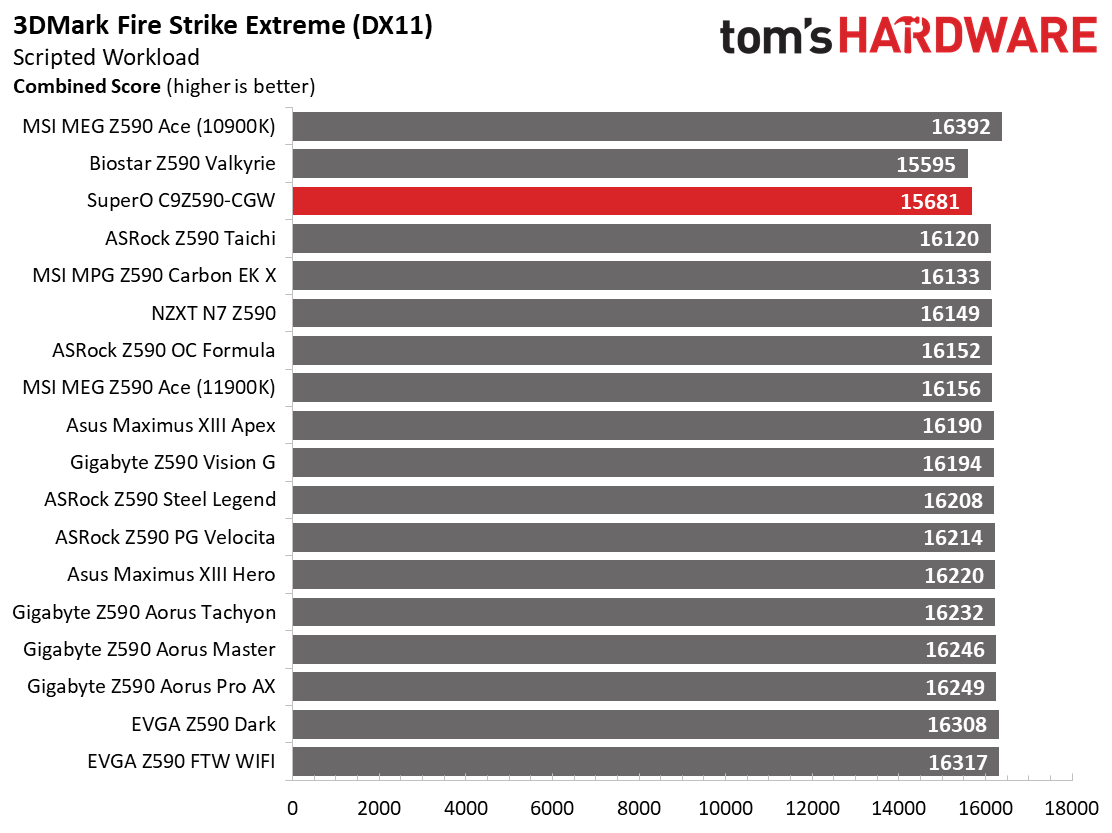
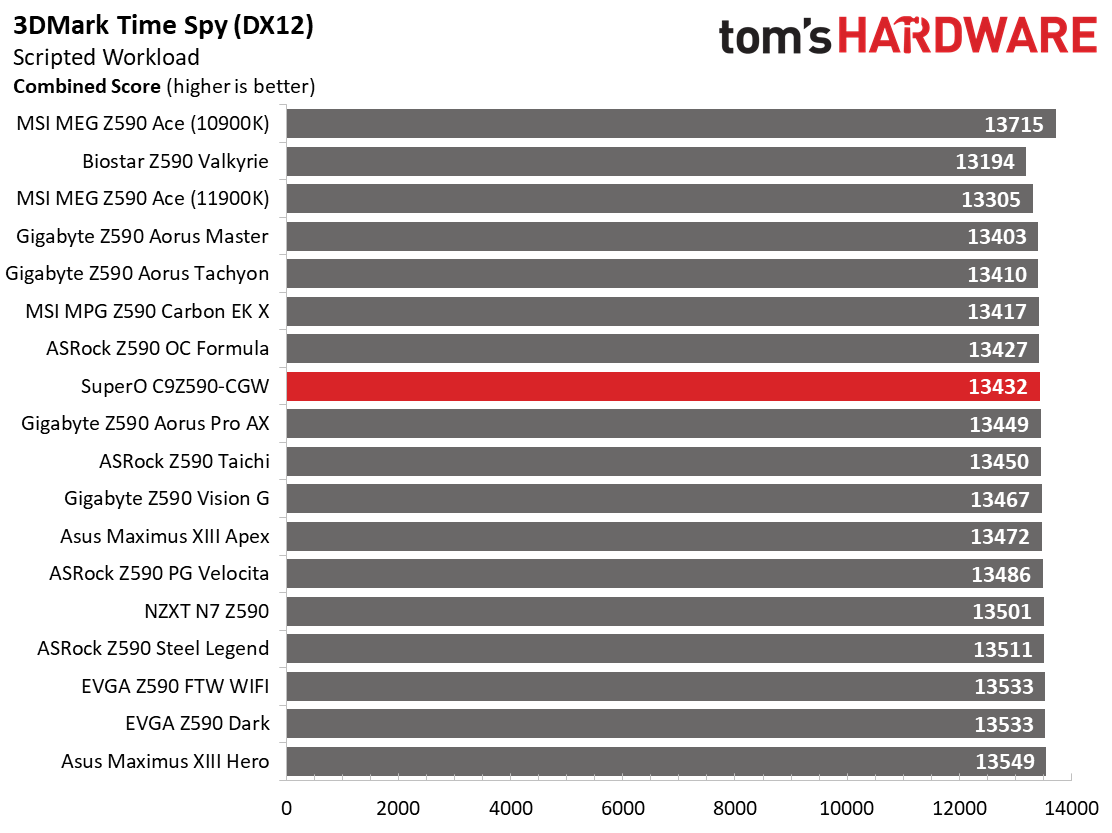


We’ve recently updated our game tests to F1 2020 and Far Cry: New Dawn. The games are run at 1920x1080 resolution using the Ultra preset. As the resolution goes up, the CPU tends to have less of an impact. The goal with these settings is to determine if there are differences in performance at the most commonly used resolution with settings most people use or at least strive for.
In 3DMark Fire Strike, the 15,681 points scored was the second lowest of our Rocket Lake results, while Time Spy ended up scoring 13,432, which is average among the tested Z590 boards. The Far Cry: New Dawn result was the slowest we’ve seen by well over 10%, averaging 123 FPS against an average of over 140 FPS. F1 2020 results were also the slowest at 206 FPS. Here, however, the difference from fastest to slowest is only around 5%. It would be difficult to see the difference in this title without running the benchmark, but you would notice the difference in Far Cry.
Power Consumption / VRM Temperatures
We used AIDA64’s System Stability Test with Stress CPU, FPU and Cache enabled for power testing, using the peak power consumption value. With Rocket Lake, we need to disable AVX-512 instruction sets; otherwise, temperatures are out of control at stock speeds on some boards. The wattage reading is from the wall via a Kill-A-Watt meter to capture the entire ecosystem. The only variable that changes is the motherboard; all other parts are the same.
Get Tom's Hardware's best news and in-depth reviews, straight to your inbox.
On the power consumption side, the SuperO C9Z590-CGW did well, especially on idle, where it used the least amount we’ve seen so far at 45W. Load wattage was about average, peaking at 277W during our test. This averages out to 161W, placing the board on the more efficient side of power use.
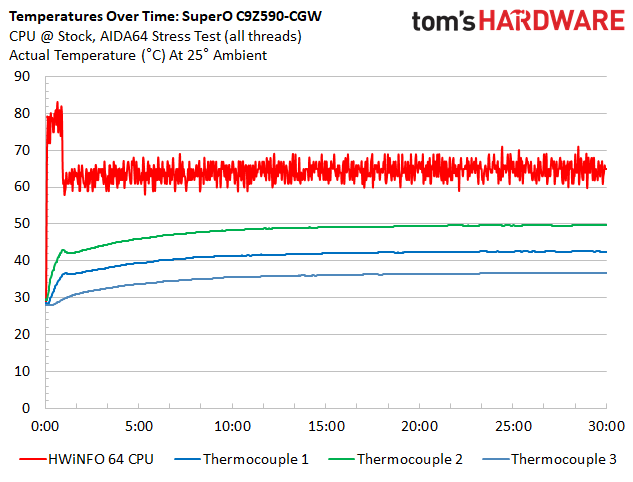
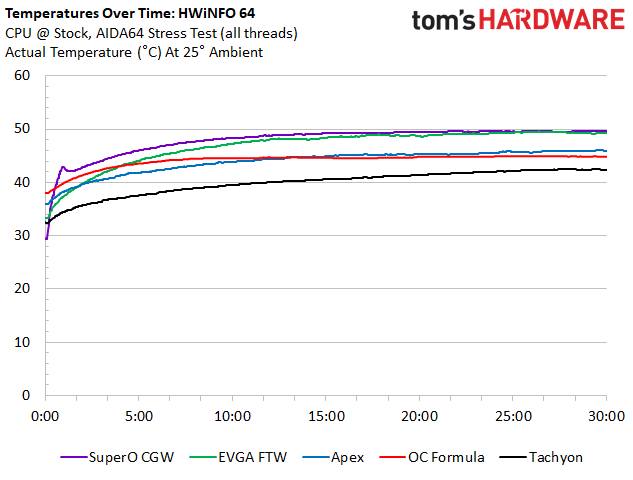

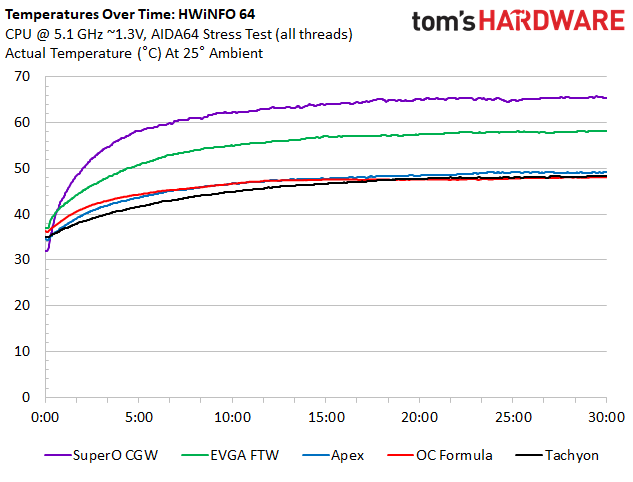
SuperO’s 90A MOSFETs worked well, efficiently managing our Intel Core i9-11900K CPU at both stock speeds and while overclocked. When running at stock speeds, the VRM peaked at 50 degrees Celsius. This was better than most of the several Z590 boards we’ve tested, though worse than the overclocking boards in the chart. When overclocked, the C9Z590-CGW kept the VRMs just under 65 degrees Celsius. This result was notably worse than overclocking-focused boards, but still well within operating parameters. We had no issues overclocking our processor using ambient cooling.
Overclocking
Overclocking on the SuperO board was straightforward. We set voltages, disabled and TVB boost(s), and any Adaptive boost, so the clocks hold and are unaffected by these automated features. The BIOS is laid out well, but the highlighting and selecting takes some getting used to. Outside of that, most overclocking options were on the surface, though some of the power options are found in different sections.
When overclocking the Core i9-11900K, we decided to do so by testing without AVX-512 instructions. When you unlock all of the power limits, you’re thermally limited, with the CPU reaching 100 degrees Celsius in several seconds. Since every board is different in following (or not following) Intel specifications, we’ve removed that variable. The bottom line is that if you need to use these instructions, you’ll need to set a significant offset compared to non-AVX-512 loads. To that end, we settled on a 5.1 GHz overclock at around 1.3V. Our CPU uses around 225W in this configuration, which lands between stock power use (195W) and AVX-512 power use (~265W) and is the end of the line due to thermal constraints.
Moving on to memory, here we ran into a few problems. To start, I was unable to get any (three total) kits of our GSkill memory to work with XMP. I tried to set DDR4 3600 speeds manually, but that was not successful either. Admittedly, I’m not the greatest with memory tweaking and overclocking, but we’re hitting a ‘sweet spot’ that’s just barely over max spec here. I’ve seen other reviews that were successful at DDR4 3600, so perhaps the kit(s) used was the issue. In short, if you want plug-and-play compatibility, buy a DDR4 3200 MHz kit--or a different motherboard.
Final Thoughts
Supermicro’s latest entry into the consumer gaming market improved in some ways and took some steps back in others. In addition to native Rocket Lake and PCIe 4.0 support, the C9Z590-CGW adds an M.2 socket (three total now), sports two USB 3.2 Gen2x2 Type-C ports, keeps the same VRM configuration and appearance, but removes the PLX chip for this generation.
Performance out of the box follows Intel specifications closely and, due to this, is overall one of the slower boards tested (alongside other boards that adhere to the spec). The low memory speed and timings didn’t help. If you adjust the turbo power limits so it doesn’t follow Intel specifications, the results are a lot closer to average.
As far as improvements are concerned, when using the Z490-based CGW, we were able to reach DDR4 4000 and couldn’t even run DDR4 3600 on C9Z590-CGW with the current BIOS and memory kit(s). Perhaps a newer BIOS will help with compatibility down the line, as we’ve seen at least one review reach DDR4 3600 speeds. For now, stick with DDR4 3200 and the tightest timings you can afford to buy. We’d also like to see the price lowered to match the feature set and appearance to compete better in the market.
As far as comparable motherboards go, there are several around this price point, including the MSI Z590 Unify ($379.99), ASRock Z590 Taichi (now $429), Asus ROG Strix Z590-E Gaming Wifi ($379.99) and the Gigabyte Z590 Aorus Master (now $409.99). The most noticeable difference between these boards is appearance. Where all of the aforementioned competition has a more premium look, including integrated RGB lighting and more shrouds covering the board, the SuperO isn’t in the same league. All boards have three (or more) M.2 sockets. Others include six SATA ports (though there is likely lane sharing).
If you’re into a fast, wired network, the SuperO is the board to own with its 10GbE, but Wi-Fi goes to the others that all have 6E hardware. Last but not least, memory support on the competition is currently better. If you plan to run anything past DDR4 3200, grab a different board to save yourself some trouble.
In the end, the SuperO C9Z590-CGW is an interesting entity in the mid-range market. It’s supposed to be a gaming motherboard, but I feel the server DNA gets in the way. Out of the box, it acts similar to a server board, following Intel specifications, but can run without those limits and perform on par with other boards. If you’re looking for the least-expensive Z590-based motherboard with a 10GbE, you’ve found it. But if that isn’t a big deal for you, better-looking, better-equipped and lower-priced boards are available.
MORE: Best Motherboards
MORE: How To Choose A Motherboard
MORE: All Motherboard Content

Joe Shields is a staff writer at Tom’s Hardware. He reviews motherboards and PC components.

